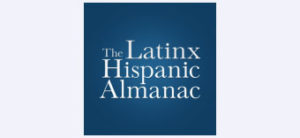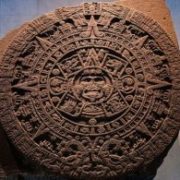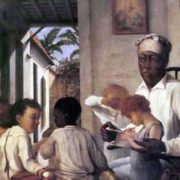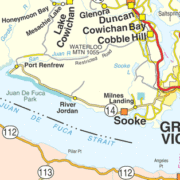The Aztec Stone of the Sun
The murmurs of awe and astonishment grew louder as the dust and fragments cleared to reveal a wonder hidden for centuries: the Aztec Stone of the Sun, also known as the Aztec Calendar Stone. The majestic sculpture is approximately 12 feet (3.7 m) in diameter and weighs 24 tons. The stone was uncovered in Zócalo, the main square of Mexico City, while repairing Mexico City Cathedral. Spanish conquistadors and clergy often built their churches directly over destroyed native American temples. The content of the stone is still debated by scholars; Aztec mythology and cosmology were complex, and the 15th century Spanish invaders obliterated knowledge of Aztec religion and culture. The stone is now housed in Mexico’s National Museum of Anthropology, a modern wonder in itself. Please visit www.mna.inah.gob.mx to view more of Mexico’s sophisticated cultural heritage.
Los murmullos de asombro y asombro se hicieron más fuertes a medida que el polvo y los fragmentos se despejaron para revelar una maravilla oculta durante siglos: la Piedra Azteca del Sol, también conocida como la Piedra del Calendario Azteca. La majestuosa escultura tiene aproximadamente 12 pies (3,7 m) de diámetro y pesa 24 toneladas. La piedra fue descubierta en el Zócalo, la plaza principal de la Ciudad de México, mientras se reparaba la Catedral de la Ciudad de México. Los conquistadores y el clero españoles a menudo construyeron sus iglesias directamente sobre templos nativos americanos destruidos. Los eruditos todavía debaten el contenido de la piedra; La mitología y cosmología aztecas eran complejas , y los invasores españoles del siglo XV th aniquilaron conocimiento de la religión y la cultura azteca. La piedra se encuentra ahora en el Museo Nacional de Antropología de México, una maravilla moderna en sí misma. Visite www.mna.inah.gob.mx para ver más del sofisticado patrimonio cultural de México.



